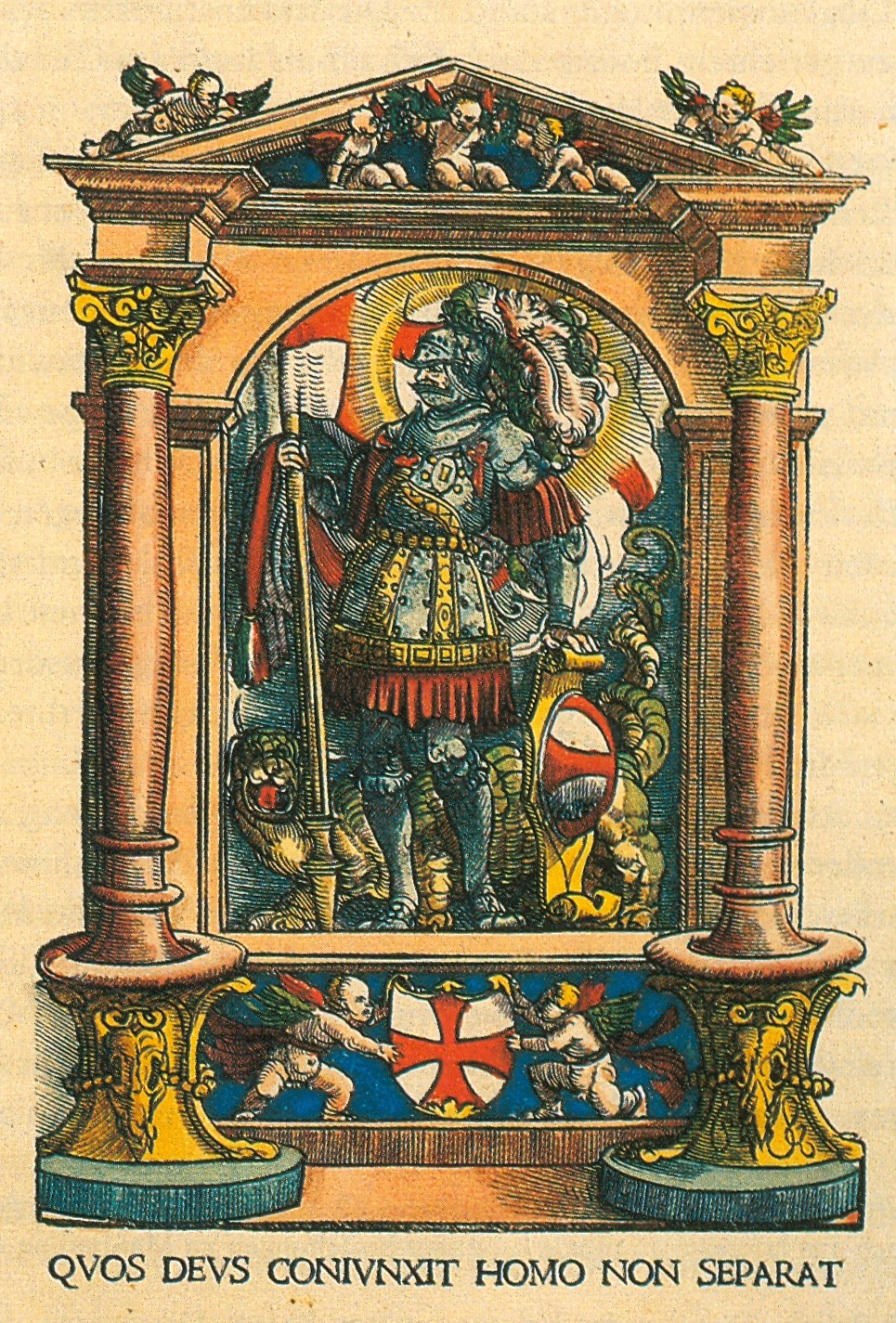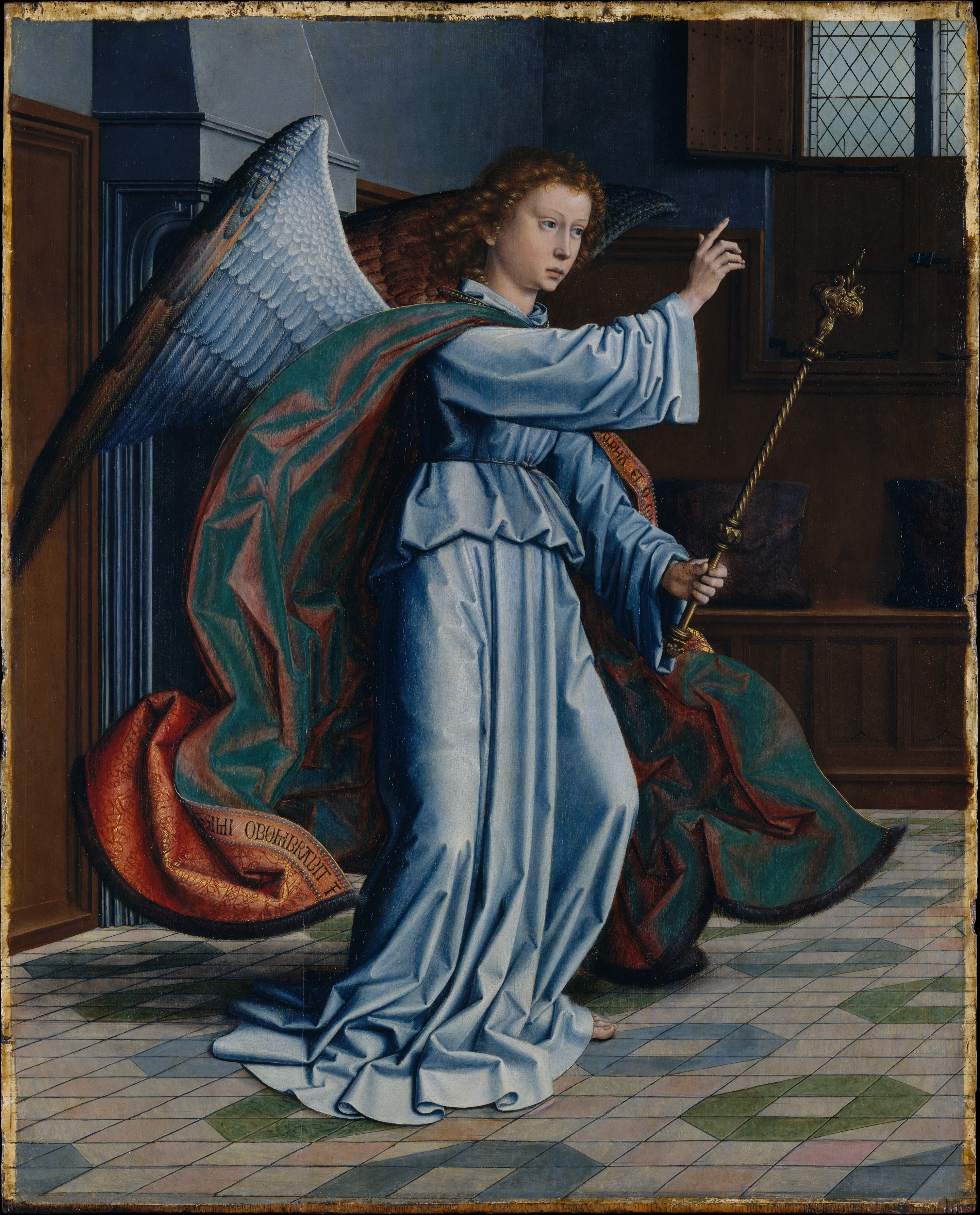|
Adoration Of The Shepherds (Martin Schongauer, Berlin)
''The Adoration of the Shepherds'' is a circa 1480 oil on panel by the Colmar painter-engraver Martin Schongauer in the collection of the Gemäldegalerie, Berlin.Catalog entry on museum website The scene is the Adoration of the Shepherds. Mary kneels before her child, which lies on swaddling clothes. Behind her are Joseph standing with ox and donkey, and facing her are three shepherds who lean forward towards the . The iconography closely resembles the revelations of |
Martin Schongauer
Martin Schongauer (c. 1450–53, Colmar – 2 February 1491, Breisach), also known as Martin Schön ("Martin beautiful") or Hübsch Martin ("pretty Martin") by his contemporaries, was an Alsatian engraver and painter. He was the most important printmaker north of the Alps before Albrecht Dürer, a younger artist who collected his work. Schongauer is the first German painter to be a significant engraver, although he seems to have had the family background and training in goldsmithing which was usual for early engravers. The bulk of Schongauer's surviving production is 116 engravings, all with his monogram but none dated, which were well known not only in Germany, but also in Italy and even made their way to England and Spain. Vasari says that Michelangelo copied one of his engravings, in the '' Trial of Saint Anthony''. His style shows no trace of Italian influence, but a very clear and organised Gothic, which draws from both German and Early Netherlandish painting. Recent sc ... [...More Info...] [...Related Items...] OR: [Wikipedia] [Google] [Baidu] |
Rogier Van Der Weyden
Rogier van der Weyden () or Roger de la Pasture (1399 or 140018 June 1464) was an early Netherlandish painter whose surviving works consist mainly of religious triptychs, altarpieces, and commissioned single and diptych portraits. He was highly successful in his lifetime; his paintings were exported to Italy and Spain, and he received commissions from, amongst others, Philip the Good, Netherlandish nobility, and foreign princes. By the latter half of the 15th century, he had eclipsed Jan van Eyck in popularity. However his fame lasted only until the 17th century, and largely due to changing taste, he was almost totally forgotten by the mid-18th century. His reputation was slowly rebuilt during the following 200 years; today he is known, with Robert Campin and van Eyck, as the third (by birth date) of the three great Early Flemish artists (''Vlaamse Primitieven'' or "Flemish Primitives"), and widely as the most influential Northern painter of the 15th century. Very few details of ... [...More Info...] [...Related Items...] OR: [Wikipedia] [Google] [Baidu] |
1480s Paintings
148 may refer to: *148 (number), a natural number *AD 148, a year in the 2nd century AD * 148 BC, a year in the 2nd century BC * 148 (album), an album by C418 Daniel Rosenfeld (born 9 May 1989), better known by his stage/online name C418 (pronounced "see four eighteen"), is a German musician, producer and sound engineer, best known as the composer and sound designer for the sandbox video game ''Minec ... * 148 (Meiktila) Battery Royal Artillery * 148 (New Jersey bus) See also * List of highways numbered 148 * {{Number disambiguation ... [...More Info...] [...Related Items...] OR: [Wikipedia] [Google] [Baidu] |
RKDimages
The Netherlands Institute for Art History or RKD (Dutch: RKD-Nederlands Instituut voor Kunstgeschiedenis), previously Rijksbureau voor Kunsthistorische Documentatie (RKD), is located in The Hague and is home to the largest art history center in the world. The center specializes in documentation, archives, and books on Western art from the late Middle Ages until modern times. All of this is open to the public, and much of it has been digitized and is available on their website. The main goal of the bureau is to collect, categorize, and make art research available, most notably in the field of Dutch Masters. Via the available databases, the visitor can gain insight into archival evidence on the lives of many artists of past centuries. The library owns approximately 450,000 titles, of which ca. 150,000 are auction catalogs. There are ca. 3,000 magazines, of which 600 are currently running subscriptions. Though most of the text is in Dutch, the standard record format includes a lin ... [...More Info...] [...Related Items...] OR: [Wikipedia] [Google] [Baidu] |
Hans Burgkmair The Elder
Hans Burgkmair the Elder (1473–1531) was a German painter and woodcut printmaker. Background Hans Burgkmair was born in Augsburg, the son of painter Thomas Burgkmair. His own son, Hans the Younger, later became a painter as well. From 1488, Burgkmair was a pupil of Martin Schongauer in Colmar. Schongauer died in 1491, before Burgkmair was able to complete the normal period of training. He may have visited Italy at this time, and certainly did so in 1507, which greatly influenced his style. From 1491, he worked in Augsburg, where he became a master and eventually opened his own workshop in 1498. Burgkmair was a Lutheran. Career German art historian Friedrich Wilhelm Hollstein ascribes 834 woodcuts to Burgkmair, the majority of which were intended for book illustrations. Slightly more than a hundred are “single-leaf” prints which were not intended for books. His work shows a talent for striking compositions which blend Italian Renaissance forms with the established German st ... [...More Info...] [...Related Items...] OR: [Wikipedia] [Google] [Baidu] |
Albrecht Dürer
Albrecht Dürer (; ; hu, Ajtósi Adalbert; 21 May 1471 – 6 April 1528),Müller, Peter O. (1993) ''Substantiv-Derivation in Den Schriften Albrecht Dürers'', Walter de Gruyter. . sometimes spelled in English as Durer (without an umlaut) or Duerer, was a German painter, printmaker, and theorist of the German Renaissance. Born in Nuremberg, Dürer established his reputation and influence across Europe in his twenties due to his high-quality woodcut prints. He was in contact with the major Italian artists of his time, including Raphael, Giovanni Bellini, and Leonardo da Vinci, and from 1512 was patronized by Emperor Maximilian I. Dürer's vast body of work includes engravings, his preferred technique in his later prints, altarpieces, portraits and self-portraits, watercolours and books. The woodcuts series are more Gothic than the rest of his work. His well-known engravings include the three '' Meisterstiche'' (master prints) ''Knight, Death and the Devil'' (1513), '' Sain ... [...More Info...] [...Related Items...] OR: [Wikipedia] [Google] [Baidu] |
Gerard David
Gerard David (c. 1460 – 13 August 1523) was an Early Netherlandish painter and manuscript illuminator known for his brilliant use of color. Only a bare outline of his life survives, although some facts are known. He may have been the Meester gheraet van brugghe who became a master of the Antwerp guild in 1515. He was very successful in his lifetime and probably ran two workshops, in Antwerp and Bruges.Campbell, 116 Like many painters of his period, his reputation diminished in the 17th century until he was rediscovered in the 19th century. Life He was born in Oudewater, now located in the province of Utrecht. His year of birth is approximated as c. 1450–1460 on the basis that he looks to be around 50 years in the 1509 self-portrait found in his ''Virgin among the Virgins''.Hand, 63 He is believed to have spent time in Italy from 1470 to 1480, where he was influenced by the Italian Renaissance. He formed his early style under Albert van Oudewater in Haarlem, and moved to ... [...More Info...] [...Related Items...] OR: [Wikipedia] [Google] [Baidu] |
Hans Memling
Hans Memling (also spelled Memlinc; c. 1430 – 11 August 1494) was a painter active in Flanders, who worked in the tradition of Early Netherlandish painting. He was born in the Middle Rhine region and probably spent his childhood in Mainz. He moved to the Netherlands and spent time in the Brussels workshop of Rogier van der Weyden. He was subsequently made a citizen of Bruges in 1465, where he became one of the leading artists, running a large workshop, which painted religious works that often incorporated donor portraits of his wealthy patrons. Memling's patrons included burghers (bankers, merchants, and politicians), clergymen, and aristocrats. Memling's portraits built upon the styles that he learned in his youth. He became very successful, and in 1480 was listed among the wealthiest citizens in a city tax list. He married Anna de Valkenaere sometime between 1470 and 1480, and they had three children. Memling's art was rediscovered in the 19th century, attaining wide pop ... [...More Info...] [...Related Items...] OR: [Wikipedia] [Google] [Baidu] |
Bridget Of Sweden
Bridget of Sweden (c. 1303 – 23 July 1373) born as Birgitta Birgersdotter, also Birgitta of Vadstena, or Saint Birgitta ( sv, heliga Birgitta), was a mystic and a saint, and she was also the founder of the Bridgettines nuns and monks after the death of her husband of twenty years. Outside Sweden, she was also known as the ''Princess of Nericia'' and she was the mother of Catherine of Vadstena. (Even though she is normally named ''Bridget of Sweden'', she was not a member of Swedish royalty.) She is one of the six patron saints of Europe, together with Benedict of Nursia, Cyril and Methodius, Catherine of Siena and Edith Stein. Biography The most celebrated saint of Sweden was the daughter of the knight Birger Persson of the family of Finsta, governor and lawspeaker of Uppland, and one of the richest landowners of the country, and his wife Ingeborg Bengtsdotter, a member of the so-called Lawspeaker branch of the Folkunga family. Through her mother, Ingeborg, Birgitta ... [...More Info...] [...Related Items...] OR: [Wikipedia] [Google] [Baidu] |
Oil Painting
Oil painting is the process of painting with pigments with a medium of drying oil as the binder. It has been the most common technique for artistic painting on wood panel or canvas for several centuries, spreading from Europe to the rest of the world. The advantages of oil for painting images include "greater flexibility, richer and denser colour, the use of layers, and a wider range from light to dark". But the process is slower, especially when one layer of paint needs to be allowed to dry before another is applied. The oldest known oil paintings were created by Buddhist artists in Afghanistan and date back to the 7th century AD. The technique of binding pigments in oil was later brought to Europe in the 15th century, about 900 years later. The adoption of oil paint by Europeans began with Early Netherlandish painting in Northern Europe, and by the height of the Renaissance, oil painting techniques had almost completely replaced the use of tempera paints in the majority ... [...More Info...] [...Related Items...] OR: [Wikipedia] [Google] [Baidu] |
Child Jesus
The Christ Child, also known as Divine Infant, Baby Jesus, Infant Jesus, the Divine Child, Child Jesus, the Holy Child, Santo Niño, and to some as Señor Noemi refers to Jesus Christ from his nativity to age 12. The four canonical gospels, accepted by most Christians today, lack any narration of the years between Jesus' infancy and the Finding in the Temple when he was 12. Liturgical feasts Liturgical feasts relating to Christ's infancy and childhood include: * The Feast of the Nativity of Jesus Christ (25 December); * The Feast of the Circumcision of Christ (1 January – Eastern Orthodox Church, Latin Rite-Extraordinary Form); * The Feast of the Holy Name of Jesus (3 January – Latin Rite; others – various); * The Feast of the Epiphany (6 January or 19 January in the Gregorian equivalent of the Julian calendar) * The Feast of the Presentation of the Lord (2 February) Depictions in art From about the third or fourth century onwards, the child Jesus is frequently show ... [...More Info...] [...Related Items...] OR: [Wikipedia] [Google] [Baidu] |
.jpg)
.jpg)







.jpg)